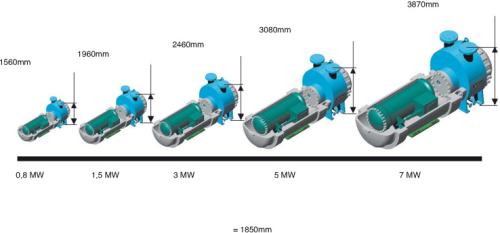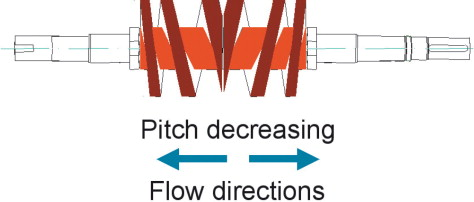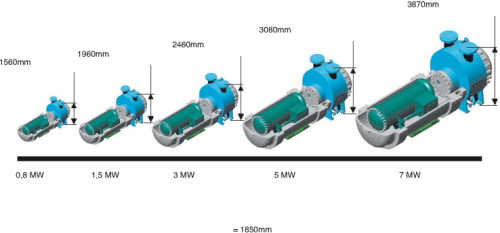Multiphase pump technology is a relatively new technology, and its development was marked by a number of test projects in which successful results paved the way to its effective use today. Bornemann, which supplied the pumps to be tested, looks at how initial installation problems were resolved so that the pumps could fulfill their potential.


Multiphase pump technology is still considered a relatively young technology even though it was mentioned in oil and gas literature way back in 1957. Bornemann was among the first to test the technology but after some initial steps, frequent pump failures due to unsolvable tasks led to the company putting the development on hold. The vision of handling liquid and gas mixtures in this way disappeared from the company’s strategy for nearly 30 years.
Later on, the company took another look at multiphase boosting technology – this time with much more success, as the following case studies show.
Poseidon project
The first implementation of multiphase pump technology in the exploration and production (E&P) industry was made in 1985 with the Poseidon Project, which was conducted by oil giants Statoil and Total and based in Tunisia. One of the main reasons for this development was the huge cost investment involved in offshore structures. The companies considered that if it was possible to boost the total well production at the subsea wellhead, as well as at distant, dry processing installations, gaining enormous cost savings. Bornemann became part of the Poseidon project in 1986 and delivered the first multiphase pump in 1990 for the start of the field test campaign until 1992.
During this campaign, two major unexpected phenomena were observed: prolonged gas phases and a thermal load on mechanical seals. Even at moderate average gas volume fractions (below 90%), prolonged 100% gas phases as dry running occurred several times a day, leading to excessive heat generation, temperature shut down, and even blocking of the rotating pump internals. Meanwhile, the mechanical seals of this first generation multiphase pump were located in the inlet chamber of the multiphase pump, and were thus directly exposed to an in-homogeneous multiphase flow. Permanent temperature variations (shocks) of the seal faces led to temporary seal leakages and even seal failures.
MTT Project
In 1987, the German Ministry for Research and Technology asked the GKSS-Research Institute, located in Northern Germany, to look at the activities of several German companies and institutes working on multiphase technology and suggested a joint research and development project. The aim of this project was to define a development goal and to quantify the market potential of the new technology. Available data regarding energy consumption, oil & gas demands, hydrocarbon reserves and resources were considered together with a forecast up to the year 2020.
For this project, Bornemann developed a multiphase pump similar to that used in the Poseidon project. It was subject to intensive scientific tests in a test campaign from 1990 until 1992 in the GKSS test facilities. Researchers used water-nitrogen mixtures to prove that a twin-screw multiphase pump could handle gas fractions up to 90%. The pressure build up along the feed screws was also examined, and the capacity increase during pumping of liquid/gas mixtures was verified.
The test campaign also included liquid slug simulation and extended gas cap simulation. As a result of these observations, Bornemann applied for its base multiphase patent in 1993.
PROCAP 2000 Project
The Procap 2000 Project and other research projects of the Brazilian state oil company Petrobras followed, and are now among the most important milestones for multiphase technology in the world. Bornemann began to take part in the project in 1993 with its delivery of a MW7T-28 multiphase pump in 2004 to the Atalaia test field, which can be found close to the city of Aracaju in Northern Brazil.
The Atalaia test field was the first full scale multiphase test loop using ‘real’ products (crude oil and natural gas) for the scientific examination of multiphase pumps – and it achieved an excellent result. In this case, the inlet piping arrangement was long enough (around 200 m) for the correct generation of slug flow entering the multiphase pump.
The test field was equipped with two different choke devices for generating the differential pressure across the multiphase pump – one directly located at the discharge and two located at the top and bottom of the separator downstream of the pump (for separate choking of the liquid and gas stream). Using one choke valve directly located at the discharge in slug flow conditions caused a pulsation of differential pressure higher than 20 bar, and led to rough running of the multiphase pump. Using the two choke valves at the separator in the same slug flow conditions meant that pulsation of differential pressure did not occur, and the running behaviour of the multiphase pump was uniform and smooth. Thus, the first practical proof of the perfect slug handling capabilities of twin-screw multiphase pump technology was demonstrated.
The test field layout in Atalaia had important impact on other test fields worldwide(especially on a test field set up by Bornemann itself).
MPA Project
In 1997, 10 years after the start of the MTT project, the German Ministry for Research and Education decided to support another research project for this technology: the MPA Project. A group of partners from the universities of Hanover, Bochum, Hamburg and Munich, along with industrial partners at Burgmann/Seals, GISMA/Connectors, Helmke/Electric Motors with Bornemann as project leader, manufactured a multiphase pump aggregate and installed it in a dry location that simulated subsea conditions of 1000 m water depth by means of a pressure vessel.
This test aggregate was installed and has operated in a Wintershall sour gas field in northwest Germany since 2004. Besides the simulation of a subsea environment the MPA Project achieved the following targets:
- Extrapolation for power requirements up to 7 MW (10 000 HP)
- Verification of mechanical seal reliability in multiphase pumps
- Management of component wear in the presence of aggressive fluids and solids
- Continuous operation, control and observation for 24,000 working hours in order to improve reliability figures of all major components
- General further development of multiphase boosting technology with regard to design, monitoring and control.
Within the MPA Project, Bornemann applied for two important patents for multiphase boosting technology – its Smart Seal System for special demands in multiphase pumping service, and the manufacturing process for feed screws allowing digressive screws, i.e. screws with a decreasing pitch.
DEMO 2000 Project
In 1998, Aker Kvaerner and Bornemann entered into a cooperation agreement for the manufacturing of subsea multiphase boosting equipment. In the course of this agreement AkerKvaerner participated in the DEMO 2000 project supported by the Norwegian government. Bornemann delivered the pump internals (type SMPC 335) for AkerKvaerner’s Subsea MultiBooster.
This module was subject to several scientific test campaigns at AkerKvaerner’s internal test facilities as well as Statoil’s K-Lab. Finally, the DEMO 2000 module was installed in CNRI’s Lyell Field in the North Sea, as the first twinscrew multiphase pump under real field sub sea conditions. It has been in operation successfully since February 2006.
MPT Project
In 2005, within the framework of a Russian/German agreement for scientific and technical cooperation, the German Ministry of Education and Research decided to support the MPT Association with a research project on the sustained use of hydrocarbon reserves by implementing multiphase boosting technology. This project covers the whole process chain, from the reservoir until hydrocarbon utilisation.
For this project, the Russian industrial partner and Bornemann manufactured a test multiphase pump system especially designed for the demands of single well multiphase boosting. This test aggregate was officially presented in Russia in March 2008 and was installed for field testing in an oilfield in Western Siberia in the summer of the same year.



